Subscribe to the Newsletter
If you are interested in understanding how Traditional Chinese Medicine can improve your life sign up to my newsletter for the latest updates.
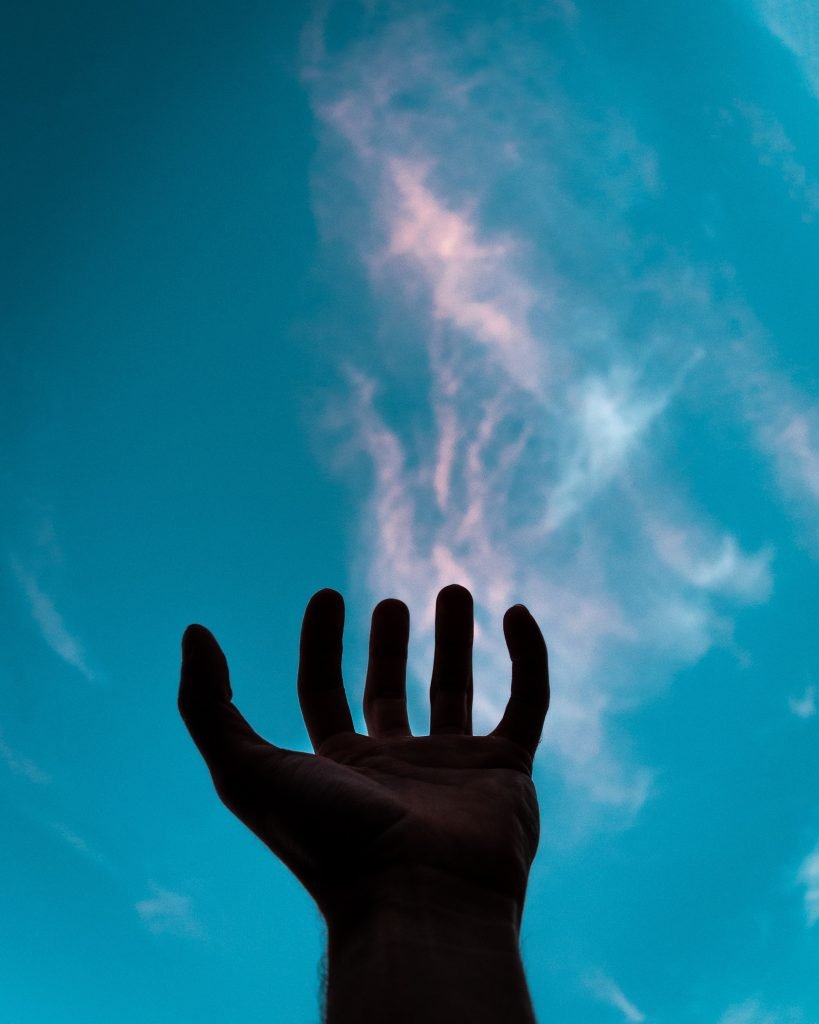
Key Learning Points
Symptoms of external heat and cold occur when your body is attacked or invaded by a ‘bug‘ (technical term, otherwise known as an external pathogenic factor).
Please, when reading this page, take note of the headings. Otherwise, you might think you are reading a duplication of something you have read elsewhere on the page.
Also … some of this is a bit technical!
If you’re new to Chinese medicine, and this is the first page about it that you read, you’re going to have to absorb a lot of new ideas. Other pages might be easier to start with, such as one on acupuncture.
Another caution! This ‘disease’ is one drug companies would have you believe they’ve solved.
You can buy any number of over-the-counter medications to reduce your pain and distress. These are highly profitable for the drug companies who spend big money advertising them.
Mostly the medications suppress inflammation, pain and fever. These are your body’s tried-and-tested ways to deal with the bug and there are potential dangers with always suppressing them using anti-inflammatories. See our page on Suppression.
OK: end of general cautions!
External Heat or Cold symptoms can be produced as your body’s reaction to the common cold or to influenza or other such diseases in their early stages. That’s before the disease penetrates further and produces Internal Full Heat.
By the way … Why do we call it a ‘cold’? Not everyone feels ‘cold’: probably more people feel ‘hot’ than feel ‘cold’, especially if they are young or vigorous. But we don’t call it catching a dose of the ‘hots’… (can’t imagine why).
It’s possible for your body to produce external heat symptoms even after exposure to very cold conditions, and vice versa.
So what are the usual signs of External Heat and Cold? The following are examples of External Wind Heat and External Wind Cold.
| Wind-Heat symptoms | Wind-Cold symptoms (ie more Cold than Wind) | Wind-Cold symptoms (ie more Wind than Cold) | |
| Fever can be high | Degree of Fever | No fever or very Mild Fever but skin may be warm to the touch | No fever or very Mild Fever: skin may be damp to the touch |
| Through nose and mouth | Usual Method of entry of the pathogen | Sometimes through the skin | |
| Mild Aversion to cold, some shivering | Attitude to Cold conditions | Chills, Strong Dislike of Cold, with shivering | Chills, Dislike of Wind, with shivering |
| Mild aching in the body | Body Aches | Severe Aches in the body | Some Body Aches |
| Slightly stiff neck; more likely to have a headache affecting the whole head | Neck symptoms | Very stiff neck with occipital headache | Stiff neck with occipital headache |
| May be red | Eyes | Unaffected | Eyes may be runny |
| Sore throat: tonsils may be swollen | Throat | Not sore, usually | Throat not sore, usually |
| Mild sweating | Degree of perspiration | No sweating | Slight sweating |
| Some thirst usually | How thirsty | No thirst usually | No thirst usually |
| Infrequent sneezing | Sneezing? | Some Sneezing | Nose blocked, perhaps some sneezing at start |
| Cough | Cough? | Slight cough or wheeze | Slight cough |
| Runny nose with yellow discharge | Nose symptoms | Runny, white discharge and sputum | Runny, white discharge and sputum |
| Yellow or rather dark | Urine | Pale | Pale or colourless |
| Floating, rapid | Pulse quality | Floating, tight | Floating, slow |
| Red at sides or front | Tongue body | Normal, initially | Normal, initially |
| Thin, white, possibly slightly yellow | Tongue coating | Unchanged, or Thin, white | Unchanged, or Thin, white |
These external heat and cold symptoms are Full or Excess External conditions. (Click to read about Excess or Deficient and Internal or External conditions.) Acupuncturists should nearly always treat them first before dealing with other syndromes of ill-health in Chinese medicine.
Because this is where the whole energy of your body is concentrating. Making it do something else would dissipate your energy. That means allowing the invading pathogenic factor, the bug, to increase its foothold and prolong your disease.
If the bug gets the upper hand, it will penetrate inwards, affecting one or more of your internal organs, and be much harder to shift.
The aim with external heat and cold conditions is to stop them in their tracks and release or ‘exteriorise’ them as quickly as possible.
This may be impossible for a variety of reasons:
Should this external heat and cold disease have penetrated to the next level already, we must strive to stop it there because wrongly treated it can become chronic, as in post-viral fatigue.
Read more about the way – in Chinese medicine – disease penetrates the body (but be prepared – it’s even more technical!) under:
Read more about how we suffer the consequences of mis-handling it under Suppression.
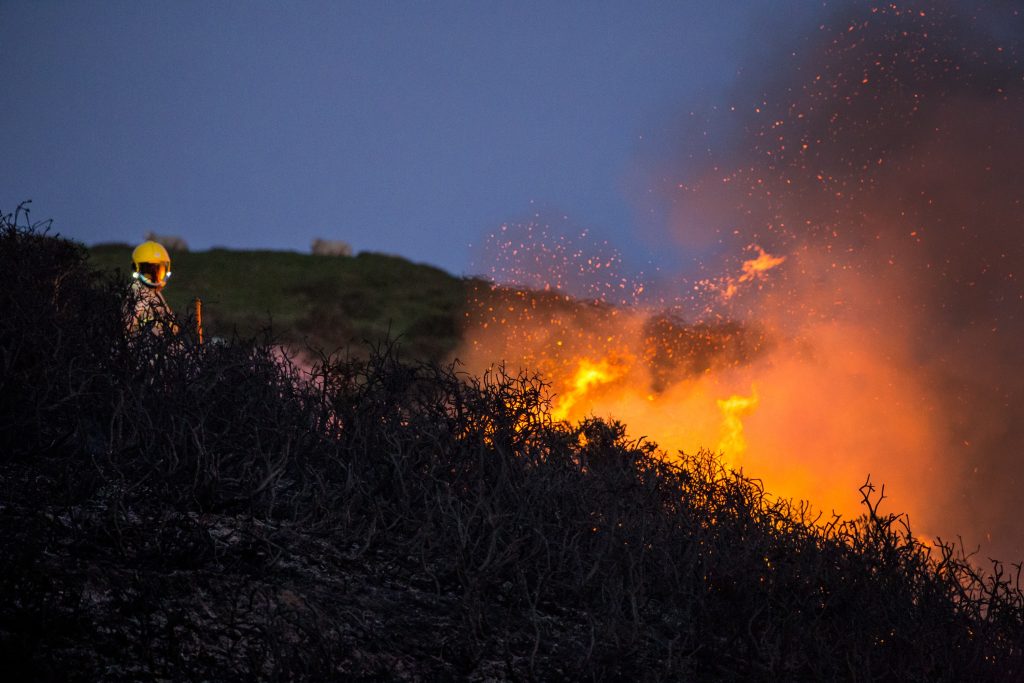
WARNING! Please realise that these treatment suggestions for external heat and cold conditions should only be followed after consultation with a qualified practitioner. Don’t assume you’ve diagnosed your condition correctly! When you are sick, even slightly sick, it is easy to take ‘sick’ decisions. Much better to see someone who knows what he or she is doing and isn’t sick!
The principle of treatment here is what is called to ‘release the exterior’ and ‘re-establish’ your Lung qi’s dispersing and descending functions.
The treatments basically aim to clear heat while harmonising your Lung Qi.
What can you do to help? Basically, eat nothing and drink lots of warm liquids.
You don’t need food because you already have a satisfactory fever. You just need fluids to replace those you sweat away. If you’re adventurous you could add herbs such as Linden, Camomile and Elderflower which are a bit like the formulae mentioned above in that they help you to perspire.
So, of External Heat and Cold, that more or less covers External Heat.
An invasion by External Wind-Cold is more complicated to treat.
WARNING! Please realise that these treatment suggestions for external heat and cold conditions should only be followed after consultation with a qualified practitioner. Don’t assume you’ve diagnosed your condition correctly! When you are sick, even slightly sick, it is easy to take ‘sick’ decisions. Much better to see someone who knows what he or she is doing and isn’t sick!
Up above on this page on External Heat and Cold conditions, we’ve covered the ‘Heat’ bit, under the heading of Wind-Heat. What about when the invasion is by ‘Cold’?
The principle of treatment here is to ‘release the exterior’ and ‘re-establish’ your Lung qi‘s dispersing and descending functions – but with a different emphasis.
Because the invading ‘Wind-Cold‘ has closed up the system and your skin’s pores, locking the ‘cold’ inside, the aim is strongly to induce sweating.
When you first come across this idea, from a Western and individual point of view, it seems somewhat crazy! Why would you make someone already very averse cold want to sweat?
The answer lies in a concept of trapped energy, causing the symptoms. The aim isn’t to cool the person down but instead, often by heating him up, to get his body to the point of sweating, thereby enabling his body to ‘release’ the bug to the exterior.
If the Wind Cold is strongly invading, this can be a challenge: the body is locked in embrace with Cold. The answer, as you’ll see from the treatment suggestions below, uses various strategies, depending on the personal experience and knowledge of the practitioner.

However, the Wind-Cold column describes a slightly different but equally important situation, unfortunately common. Here, the body lacks the power to embrace the cold, and is already sweating a bit. This sweating is insufficient: it’s not doing the job, because the body can’t produce sufficient heat to boil the bug away before it starts sweating.
Put another way, the patient’s immune system isn’t strong enough, even with sweating, to force out the pathogen.
So with Wind-Cold the aim is to strengthen the patient’s internal strength, his immune force. That means giving him the right food.
So, in this case, it is necessary to ‘regulate’ or ‘harmonise’ the protective (ie defensive) qi with the nutritive qi. This is about as close as you’ll get to the Western ‘Old Wives’ suggestion to ‘feed a cold and starve a fever’: in this case you’d feed the cold – but cautiously.
‘Cautiously’ means simple fuel that warms and nourishes. Rice gruel and thin chicken soup come to mind. Watery cabbage consommé soup, anyone? In particular, consider Clogstoun Congee with mildly warming herbs.
Note: why did the ‘old wives’ starve the fever? Because a proper fever, where you feel really hot, has already achieved its ability to kill the bug. That compares with ‘feeding a cold’, which presupposes that you’re feeling cold (whether you have a fever too, or not). As such you cannot achieve the kind of fever you need – when you will actually feel hot.
The following is mainly for where Cold predominates as opposed to Wind. (If Wind predominates – see below, you’d be more likely to feel alternately hot and cold, with more shivering, and with different parts of your body feeling painful or hot or cold at different times: like sudden chills here and there, with more sneezing, dislike of drafts and you’d be sweating a bit.)
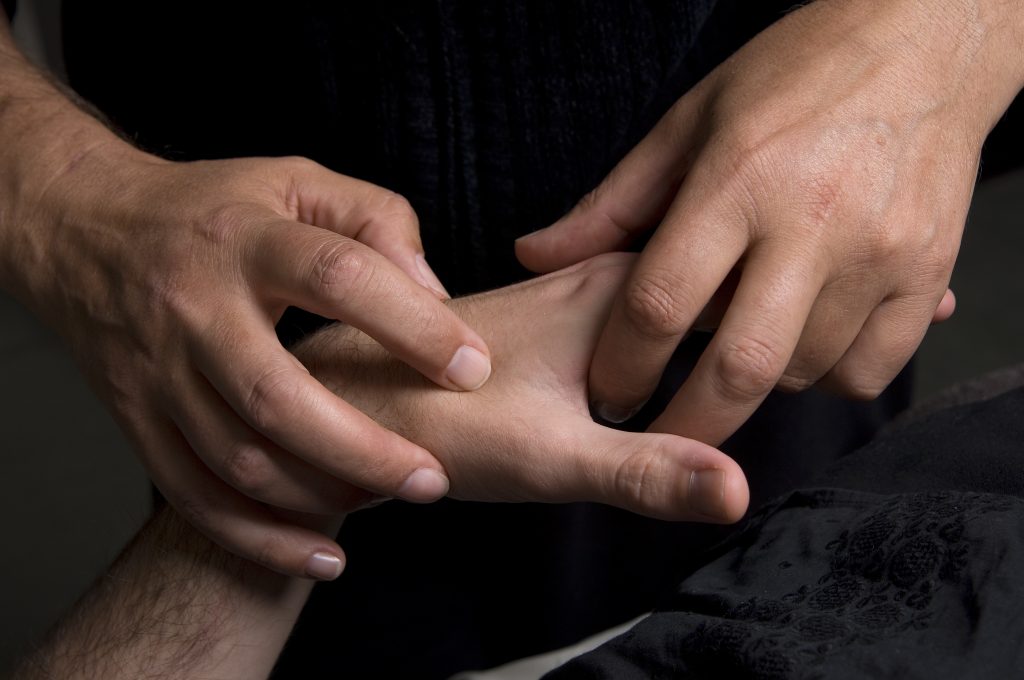
Acupuncture points in common use for where Cold predominates (ie great aversion to Cold and no sweating) might include:
… all with reducing method.
The first three points are strongly treated. In fact this can be a powerful treatment. Some Western patients aren’t used to it! But it can be very effective.
Kidney 7 if reinforced when Large Intestine 4 is reduced usually induces sweating.
Also:
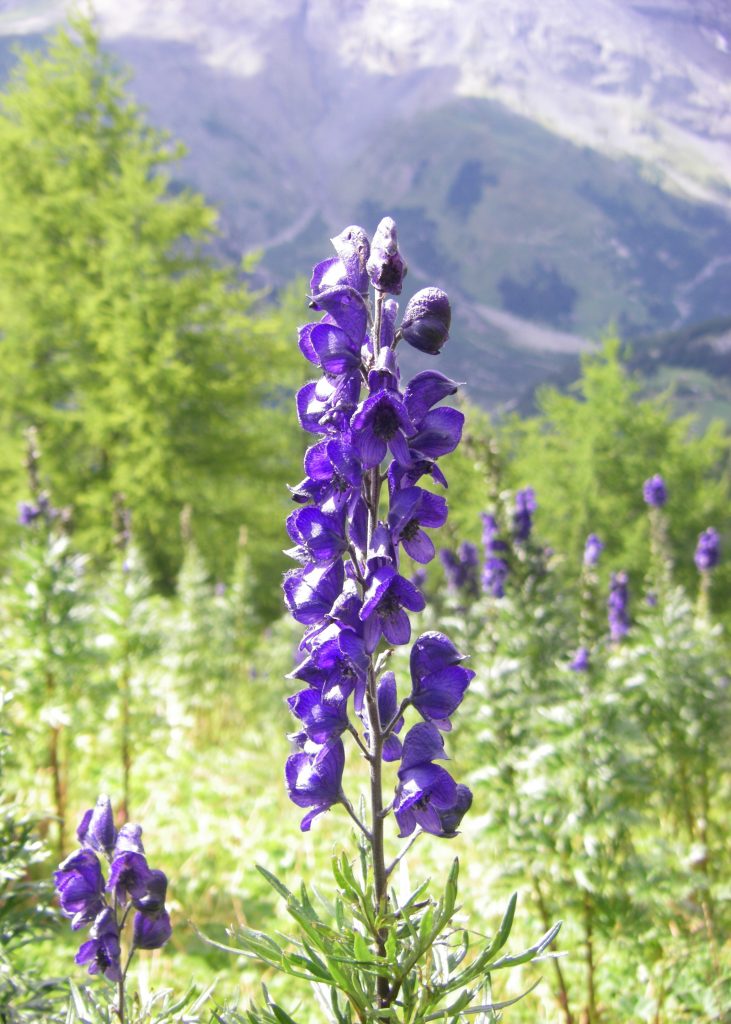
So in the hands of a qualified herbalist there is no danger with Ma Huang. But please understand that Aconite/ephedra is extremely poisonous. If you don’t know what you’re doing, don’t experiment with this herb on yourself or indeed on anything living! In the UK it’s illegal.
Herbs for Wind-Cold are pungent and warming, intended to cause sweating.
if you know or suspect that your health isn’t up to taking a hot bath, don’t do this! This suggestion suits mostly those who are young and healthy (except for the bug they’ve caught of course), or if not young are in rude and vigorous health without, for example, hypertension or epilepsy etc..
Where Cold predominates in an external Wind-Cold condition, a hot bath can do the job. The water should be about as hot as you can manage. Alternatively, get in and heat it up by adding more hot water. Initially you’ll still feel chilled, in spite of the hot water, but you’ll know if and when it works because you’ll start to feel HOT instead of COLD, and then you’ll start sweating.
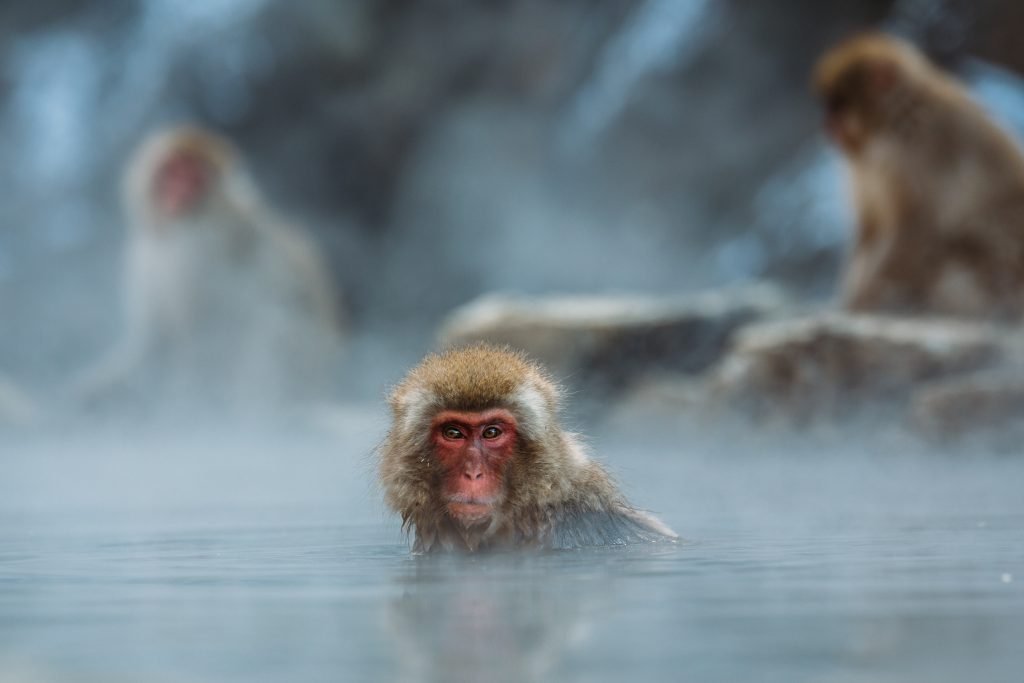
However, if you start sweating before you feel hot, then it’s probably not working and you might be better off in bed with a hot drink, see below.
As long as your digestion can take them, warm and strong diaphoretic (sweat-inducing) foods, drinks and herbs are appropriate. Avoid all foods that are cold or chilled or iced when eaten or drunk. Food and drinks should be warm, spicy and make you sweat.
A preparation I’ve used successfully goes something like this (remember, this is for external Wind-Cold, where Cold predominates).
Ingredients:
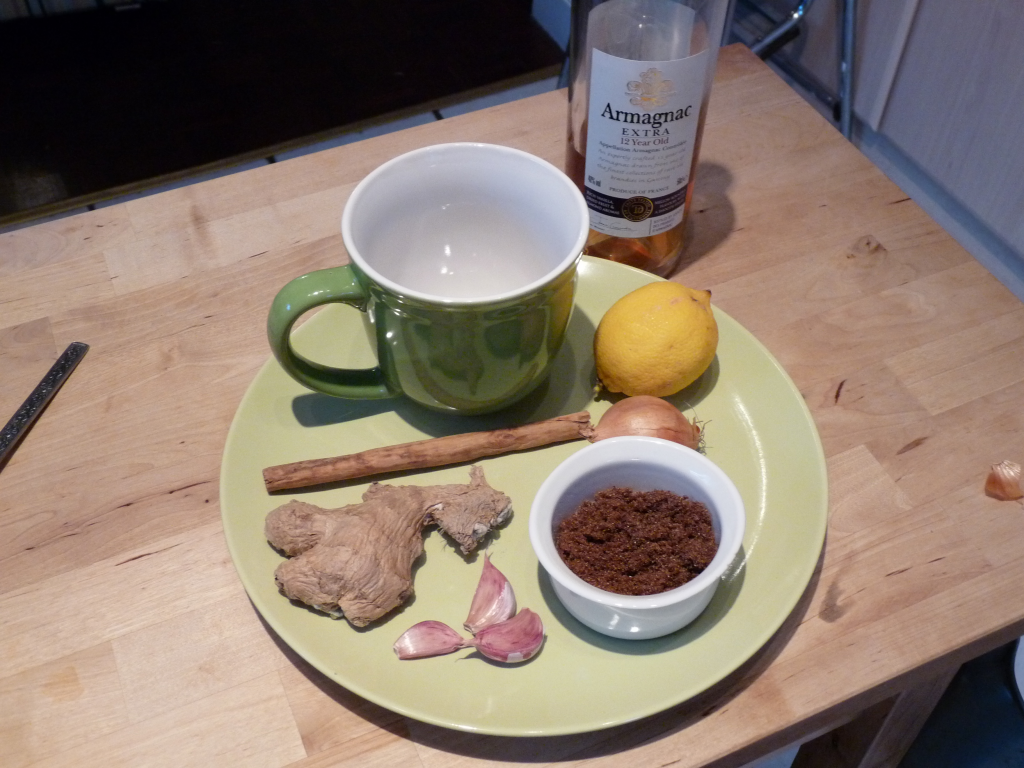
Consume it by sipping it. You can make a whole ‘vat’ of it if you like it (though I doubt if you’ll like it) but take it for only as long as you need to make you start sweating.
Once you start sweating, reduce how much you take, or stop taking it and only start again if you stop sweating.
Then go to bed, well wrapped in several dressing gowns, taking hot water bottles or heated bean-bags to keep you warm and make you sweat.
Hot bodies of close friends can also work, though they may not appreciate you tossing around, let alone the very copious sweating you hope to achieve while asleep.
When this works, you’ll wake in the morning drenched but better.
If so, what happened to the bug? You may still have it, but it can’t produce symptoms because your body has prevailed. More likely, it’s dead and gone. In any case, your body will be more than prepared for the next one that comes along, which you may not get.
It turns out – and I’ll add the reference when I find it – that your good gut bugs are happy to proliferate up to about 40.5C whereas the baddies manage much less. So fever really does benefit you.

Stay in Touch!
No spam, only notifications about new articles and updates.

Book a Video consultation if you want to know more about your symptoms
Here WIND prevails, although there is also Cold.
Acupuncture: first harness the Qi by reinforcing the points given above, (possibly including others that strengthen the system such as Stomach 36, Tsusanli,) then reduce them (but don’t reduce Tsusanli). However, don’t try this on yourself. Get an experienced acupuncturist to do it.
Food-wise, most important is nourishment to strengthen your system to fight the pathogen. This is where rice gruel eg Clogstoun Congee, chicken soup and water cabbage soup can help: easy to digest. (Nobody said you had to like it, however!).
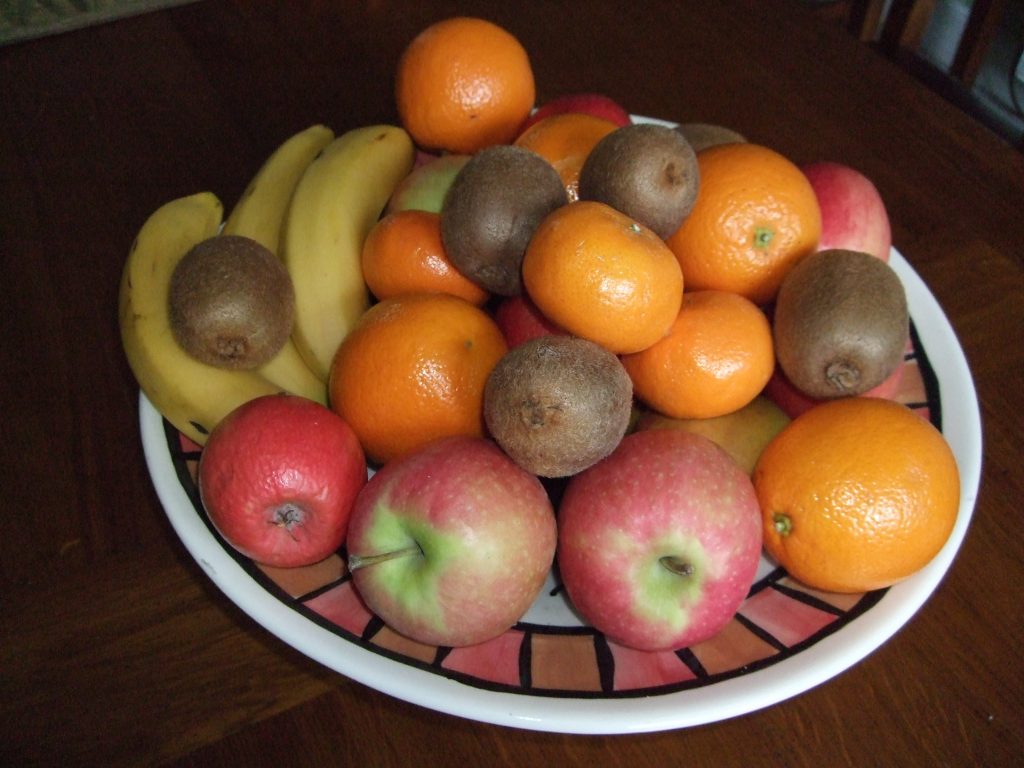
If you know about nutrition from a Western perspective, you’ll be thinking of copious vitamin C etc, but this is NOT the main thinking in Chinese medicine.
Not that sufficient supplies of Vitamin C are completely wrong, it’s just that addressing the body’s energy levels is more right.
In some cases, until your energy levels are better, all that Vitamin C powder – or fruit – will just shoot through you and out the other end because your body lacks the warmth and yang-power properly to digest and absorb it. Besides, Vitamin C is cooling. Fruit is cooling.
You are already cold, so don’t eat foods or powders that make you more cool!
(So, between External Heat and Cold, because it is more cooling than warming, Vitamin C is probably better for invasion by Heat and Wind-Heat.)
In both Wind-Cold and Wind-Cold conditions you should avoid eating cold foods. These are both foods that are cold or chilled when eaten, and foods that have a cooling effect on your system, including fruit. Click on the above link to cold foods to find out more.
Diaphoretic – ie sweat-inducing – foods, drinks and herbs should be avoided by Wind-cold patients, because they increase the sweating and waste or weaken the body’s fluids to no good effect: after all, the patient’s body was already sweating and it wasn’t helping.
No point increasing the sweating here, it would be damaging, making you lose your body fluids, Yang qi and strength to no good effect.
Indeed, with Wind-Cold symptoms, avoid foods that are too heating (like very spicy foods, roasted foods, chillies, hot peppers, red meats) because these make you sweat more, before you have the strength to push out the bug.
The same goes for any drinks that make you sweat before you’ve got the energy to heat up long enough to dismiss the pathogen.
It is important to clear external Heat and Cold symptoms as soon as possible. They represent the body striving to keep the invader away from its centre. This page helps you learn how to help your body do its job better.
Of these External Heat and Cold symptoms the external Heat symptoms are at the most exterior level of all: your body has mounted a hot rebuttal to the challenge. Rightly handled, it can win and get rid of the bug fast.
Of these External Heat and Cold symptoms, the External Wind-Cold symptoms are your body’s second-best effort. If Wind predominates, it indicates some loss of patency of your system, which needs to be strengthened before it can mount an effective force against the bug.
If your body is able only to mount a Wind-Cold defence, you are probably under-par. In other words, you are tired and not as fit as you would like. Perhaps you –
External Heat and Cold attacks are common and cause many painful conditions. If you don’t treat them right they can lead to other diseases recognised in Western Medicine.
If we can successfully treat External Heat and Cold attacks every time we’ll reduce the amount of human suffering. So learn to spot the symptoms of External Heat and Cold and seek early treatment, or know what to do for yourself!

Why You get Nervous Stomach Anxiety and How to Handle It. Acupuncture has great ways to help.
Subscribe to the Newsletter
If you are interested in understanding how Traditional Chinese Medicine can improve your life sign up to my newsletter for the latest updates.
Subscribe to the Newsletter
If you are interested in understanding how Traditional Chinese Medicine can improve your life sign up to my newsletter for the latest updates.